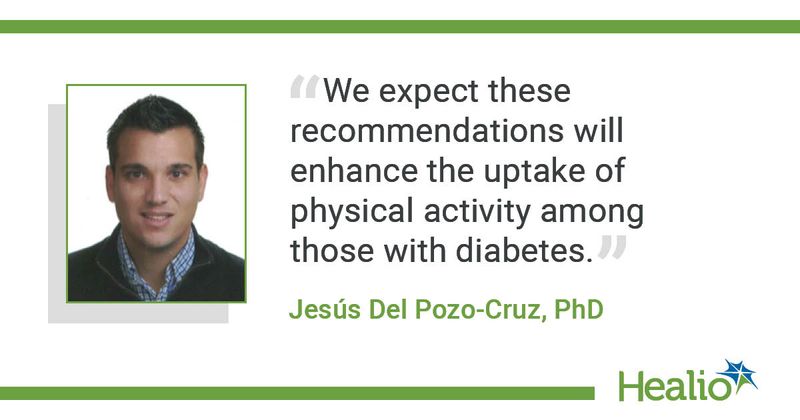Walking more than 10,000 steps daily reduces mortality risk in prediabetes and diabetes
Adults with prediabetes or diabetes have a reduced risk for all-cause mortality if they walk more than 10,000 steps per day, according to study findings published in Diabetes Care.
“Physical activity is very beneficial for patients with diabetes and prediabetes,” Jesús Del Pozo-Cruz, PhD, associate professor in the department of physical education and sport at the University of Seville in Spain, told Healio. “We provide the optimal number of steps per day to improve long-term health in these patients.”

Del Pozo Cruz and colleagues conducted a prospective analysis of data from the National Health and Nutrition Examination Survey 2005-2006 cycle. Adults with prediabetes or diabetes as determined through a physician diagnosis or HbA1c level were included. Data were linked to death records from the National Death Index through Feb. 25, 2019. Participants wore an accelerometer on their hip for up to 7 days to measure the number of steps per day. Adults who had at least 1 day of accelerometry data were included.
There were 1,194 adults with prediabetes (mean age, 55 years; 56% men; median 8,500 steps per day) and 493 adults with diabetes (mean age, 61 years; 51% men; median 6,300 steps per day) included in the study. For those with prediabetes, participants taking 10,678 steps per day had a lower risk for all-cause mortality compared with those in the 10th percentile taking 3,779 steps per day (HR = 0.25; 95% CI, 0.16-0.36). Similarly, adults with diabetes taking 10,177 steps per day had a lower all-cause mortality risk than those in the 10th percentile taking 2,532 steps per day (HR = 0.25; 95% CI, 0.14-0.47). Findings from sensitivity analysis combining the prediabetes and diabetes groups, as well as an analysis of participants with at least 3 days of accelerometry data, yielded similar results.
“Current physical activity recommendations are based on how much time people spend in physical activities of moderate and vigorous intensity,” Del Pozo Cruz said. “These may be difficult to follow for the general population and particularly for patients. Step-based recommendations are, on the other hand, easier to follow. We expect these recommendations will enhance the uptake of physical activity among those with diabetes. Step-based recommendations may also be easier to interpret by clinicians.”
A nonlinear association between steps per day and cardiovascular disease mortality was observed for adults with prediabetes, whereas there was a linear association between steps per day and CVD mortality among adults with diabetes. There was a low number of CVD events in both groups, with 49 CVD deaths observed in the prediabetes group and 36 in the diabetes group.
Del Pozo Cruz said more studies are needed to analyze whether steps are a feasible target for increasing physical activity in people with diabetes.
For more information:
Jesús Del Pozo Cruz, PhD, can be reached at jpozo2@us.es.
